Interview by ELISABETTA PORCINAI — Photos by MARCO PIETRACUPA
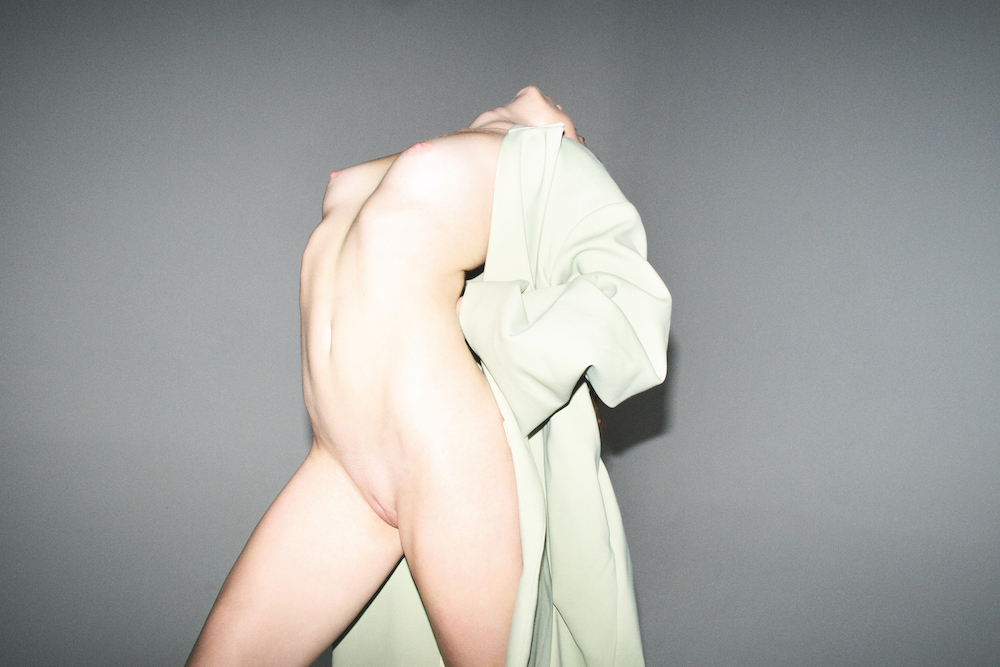
‘When I take pictures, I need to feel some excitement: either to laugh or to cry. For the time being I’m laughing, I haven’t started to cry yet!’ — M. Pietracupa
And so does Marco, he laughs and gets emotional when he talks about himself and his world, that very world he captures in his signature images – so naked and honest.
Here I will try to report our conversation with the same honesty and freshness which are so dear to Marco Pietracupa.
We plunge into the red sofas of a cosy café in Milan and we talk; we talk about his role of pioneer and spokesperson of a groundbreaking language on the Italian fashion photography scene – irreverent, loud and almost alien to the ‘Bel Paese’ – a language that makes fun of fashion a little, forcing it to take down that institutional mask it has so stiffly put on. We talk about Juergen Teller, family and prostitutes – maybe we even talk too much.
With his words, he finally exhorts us to give Italy a chance, trying to bring something new to the scene even when it looks like there is no ground for change, because as Marco says: ‘If we all go away, what are we going to be left with?’
ELISABETTA P. — Can you tell us about your first approach to photography? Where did your passion originate from?
MARCO P. — Let’s say my first approach developed within a very familiar context, it’s a passion that I’ve started to nurture since the beginning. My father was a photo amateur and owned a couple of cameras which he kept at home. I very soon grew fond of this object, taking my first photos when I was just a child, to the point that, tired of seeing me handling his precious cameras, which he was rather jealous of, my father bought me one for my own. From that moment on, I started taking photos everywhere: at school, on trips and so on. Without even thinking, I started to develop this passion while growing up, to the point that, from being a hobby-photographer, I finally made that jump to become a professional.
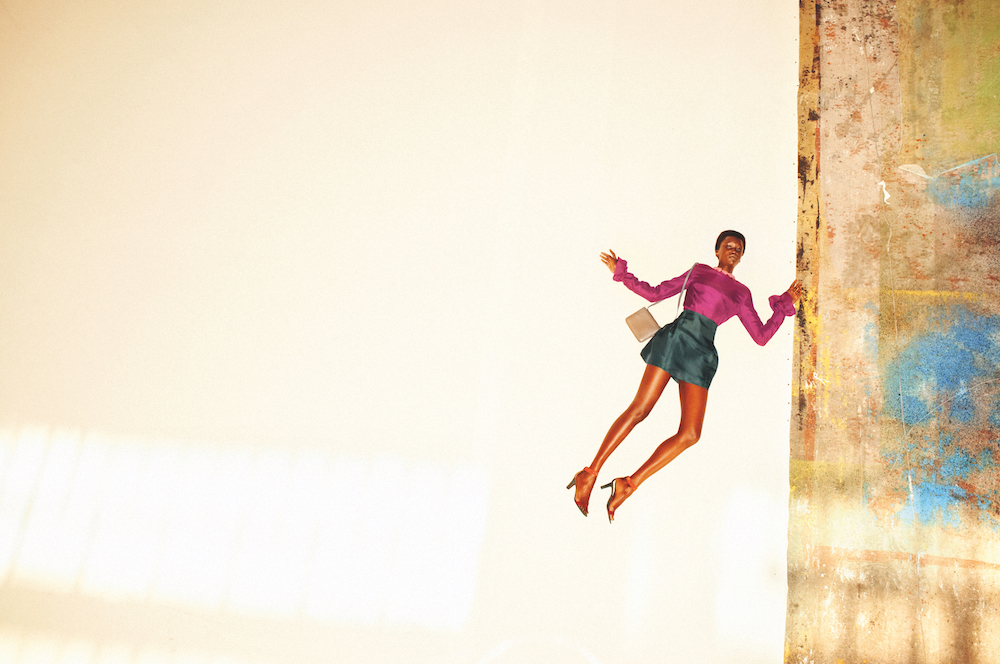
ELISABETTA P. — What has characterised your photographic evolution thereafter? Have you always kept a constant stylistic direction or have you noticed substantial variations over time? Is there a moment when your distinguishing character has emerged as strong and unmistakable?
MARCO P. — I can say that I have always been faithful to a certain kind of style: there has always been a sort of narrative within my photos, which are never limited to just a purely aesthetic matrix. Another distinguishing feature is perhaps the minimalistic choice which has always led me not to use lights, or to just use the light of my camera-flash and small format cameras.
I have also had a Black&White period, where I became passionate about developing and printing processes which I executed myself. But from there I finally made the final step: from Black&White I radically switched to colour; my way of taking photos, though, has almost remained unvaried. Flash is definitely an instrument that characterises me and that I have been using since the beginnings. Such stylistic direction has been subsequently something I have sought after and elaborated, also influenced by those styles that were emerging in England at that time.
ELISABETTA P. — Therefore, you observed and then re-appropriated all within your own language…
MARCO P. — Yes, exactly. Let’s say that I ‘moved in circles’: I started from a point, I have experimented along the way, to then come back to the simplest thing which had characterised my beginnings: a small camera with a flash on top. Moreover, casually, in that very first period when I moved to Milan to attend photography school, that particular style was starting to take shape, also in fashion, bringing to light great names, such as Juergen Teller or the less frequently mentioned Mark Borthwick. Borthwick, for instance, is an English photographer who, with his photography, has contributed to reshape the language of fashion in the 90’s, by questioning it, stripping it down and deconstructing it and, most of all, by removing models from the pedestal they had been placed on – making them human.
As a matter of fact, until the 80’s, ‘supermodels’ were the rule – dressed-up, perfect, untouchable. Then fashion witnessed the birth of a trend that once again promoted ‘humanised’ models: normal women, who could also have a sickish look at times. I embraced this ideal straight away because I felt this necessity – I wasn’t really interested in fashion as such.
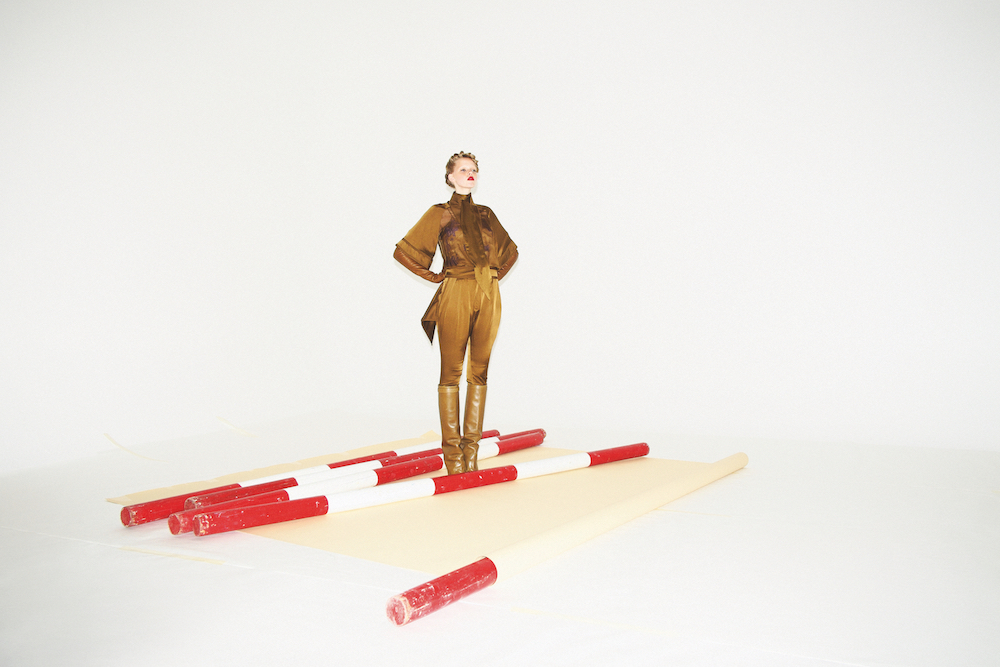
ELISABETTA P. — Since you mentioned him first, let’s talk about Juergen Teller, an artist with whom you seem to share common ground. When did you first get to know his work? Was it here in Italy?
MARCO P. — When I first started, Teller was beginning to emerge, and seeing what he was doing has always re-assured me, thus giving me the strength to carry on. Said this, though, we both went our own distinct ways.
Juergen Teller has become a topic I find myself to discuss over rather often. The similarity that people tend to attribute to our work has its positive sides as well as its downfalls: on the one hand, it is a consistent weight on my shoulders, as I get often – and partly understandably – told that I copy him. From a superficial kind of approach, it is quite easy to make such a statement: they see my pictures, they see his, and the association is quite immediate. On the other hand, I consider it certainly as a compliment! Unfortunately, though, only few people are aware of how much I’ve made this language my own distinguishing style.
ELISABETTA P. — Sure, I understand. However, by comparing your work to Teller’s, I would say that there are definitely some distinguishing elements in both.
MARCO P. — Yes, obviously they are different, but at a first glance, one may see the use of flash and other similar elements and those who don’t go beyond the most superficial layer of the image, immediately place us in the same context. The majority of people probably don’t know that there may be someone else feeling the way he does, having his same kind of taste, the same kind of cultural imprinting. I was born in Alto Adige (South Tyrol) and he was born in Bavaria: we were both born and raised in very similar contexts, both aesthetically and culturally, and this has been surely an influence on the imagery of both of us.
In this same context, we could also mention Walter Pfeiffer, a Swiss photographer now in his seventies. He was already taking this kind of photographs in the 70’s. So, we could as well say that Teller and Richardson copy him. What I mean here is simply that this cultural matrix acts as a determining thread: Pfeiffer is Swiss, Teller is Bavarian and I’m from South Tyrol; casually all three of us are linked by this common German culture, and casually we all take similar pictures.
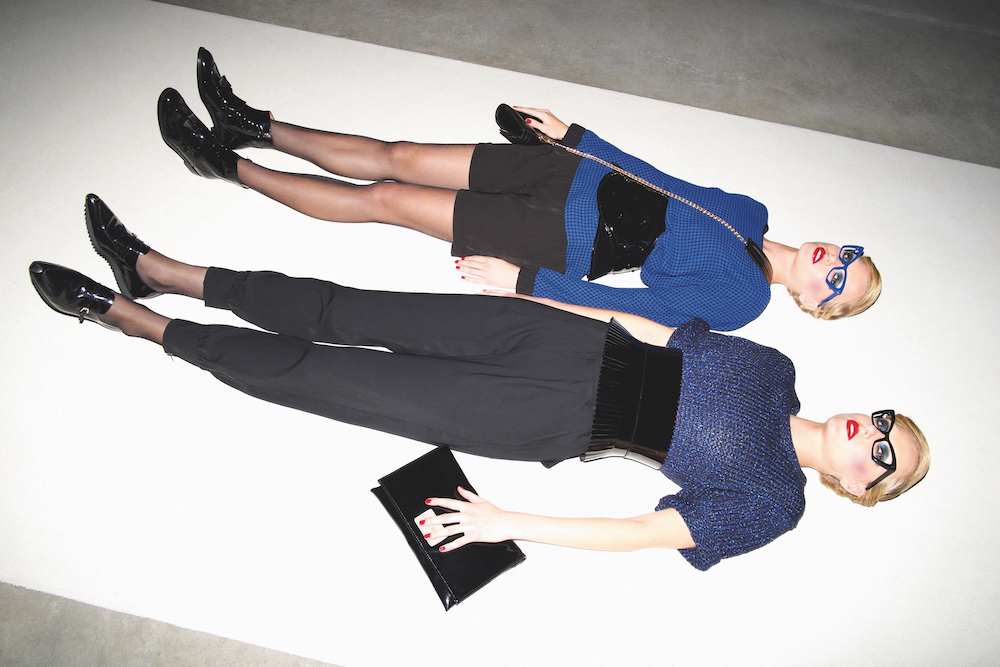
ELISABETTA P. — You position is indeed quite unique: you live and work in Italy but you represent in fact a sort of isolated reality. We can affirm that you are the greater exponent of a photographic language which, although broadly accepted and ‘metabolised’ in the rest of Europe, is still struggling to become established in Italy, as considered a particularly extreme current within photography. Have you ever experienced any resistance with regard to this throughout your career?
MARCO P. — Well… resistance is definitely a simplistic word! [laughs] In order to publish my first photo in the so-called ‘institutional’ magazines in Italy, it took me something like 10 years! I started here in Milan in the first half on the 90’s, I think it was 1994. At the end of the second school year, it was very clear to me that this was my language, that this was what I felt and what I had to pursue. However, every time I went to magazines to show my work, they had all sort of reactions: either they got scared or they said I was crazy. The only advice they seemed to all give me was to go to London, where there were editorial projects such as I-D or The Face, which were among those that contributed to legitimise this style in fashion. On the contrary, in Italy many photographers still struggle to be successful within this current.
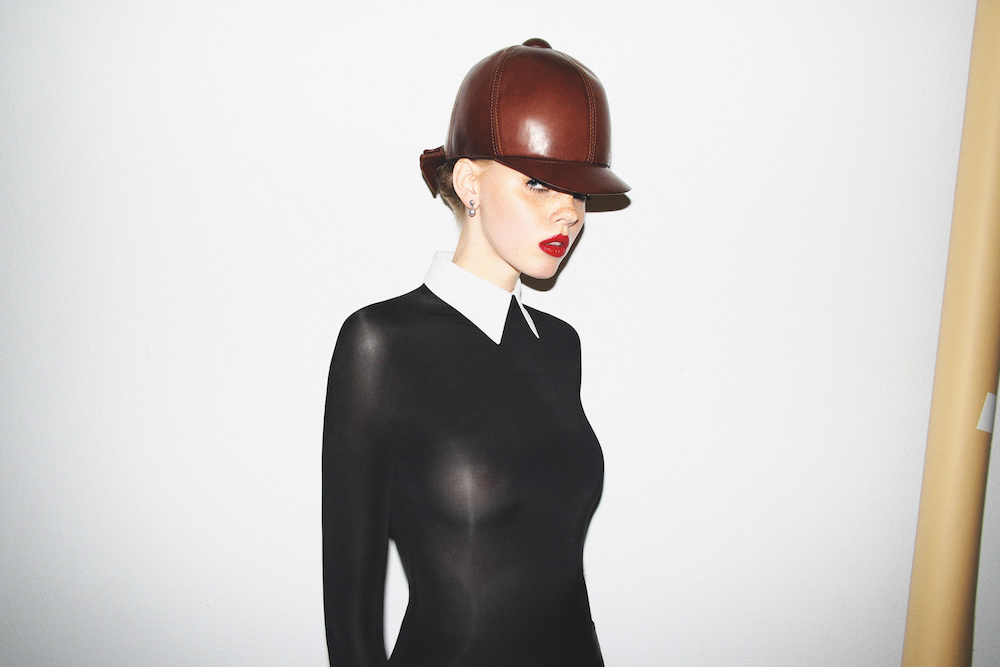
ELISABETTA P. — And yet; Italy still figures among the major fashion hubs – why do you think it struggles so much?
MARCO P. — Again, it is all inevitably linked to a cultural matrix. In Italy this is an alien language, it belongs to another culture. The English, for instance, as well as the Germans, are instinctively closer to this particular imagery. Italy, instead, has always been much more ‘classical’; that’s what belongs to the Italians’ language, and therefore what they express best and more spontaneously.
ELISABETTA P. — Who was the first, far-sighted editor who published one of your photos?
MARCO P. — My first continuous job was with D di Repubblica, where of course I had to cut my own teeth: I worked on headings for a long time, I think a couple of years. With a little perseverance and stubbornness, in the end I also managed to shoot editorials, which I have been doing for 10 years now. Anyhow, commercially speaking, D was one of the first magazines that believed in me. They were smart enough to realise what was happening on a global scale: they saw the English magazines and understood that this was the language that was starting to get established, that it was something new.
ELISABETTA P. — They eventually opened their eyes…
MARCO P. — Yes, they finally took a little courage. Then in fact they’ve often reprimanded me and imposed me some limitations. Paradoxically, in the beginning I was even more extreme: in the 90’s, the proposed ideal of a woman was almost ill-looking and, naturally, those kinds of magazines were quite resilient to publish something of that sort. In the end though, we found a common ground of agreement: I understood that some things were a bit too over-the-top, while they learnt to like and welcome other things.
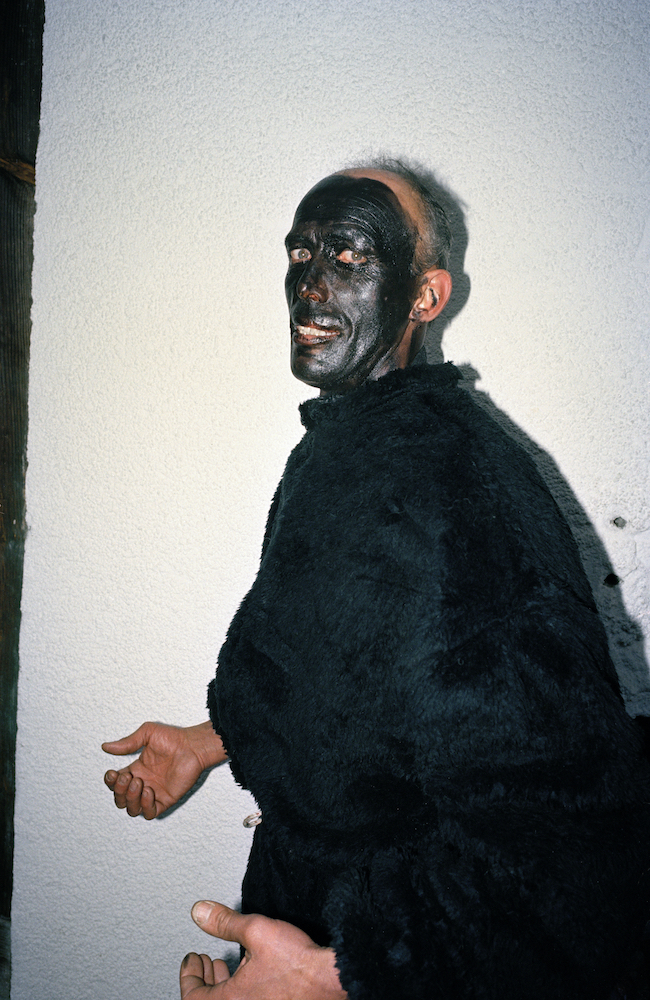
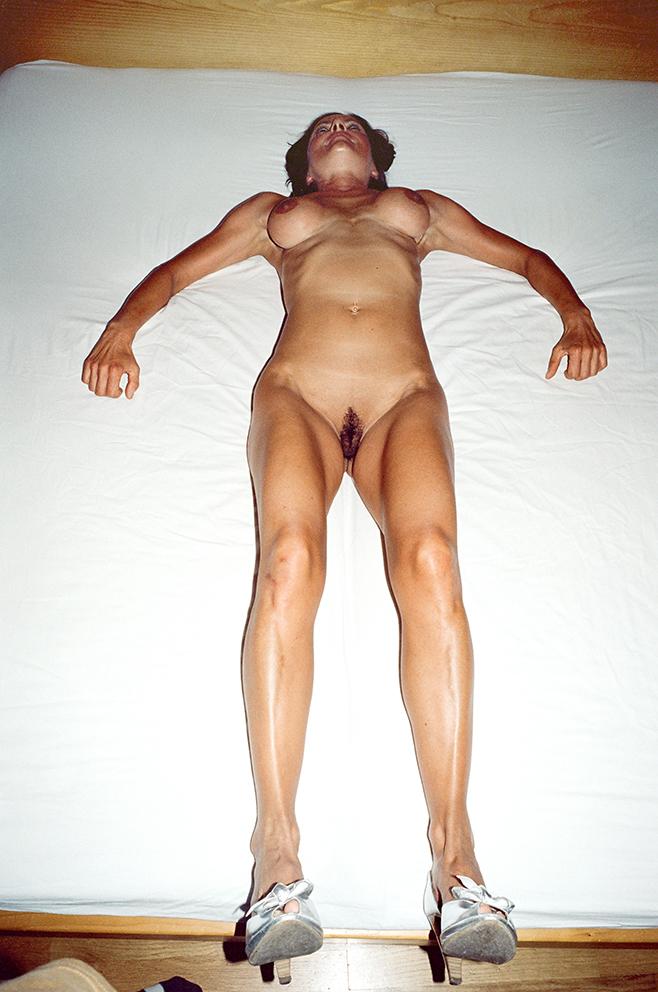
ELISABETTA P. — Let’s say you ‘happened’ to get into fashion, and still now we can read a certain irony in your images, a will to desecrate this monolithic institution. What does Marco think about fashion per se? Do you make a little fun of it?
MARCO P. — Let’s say that, on one hand, I like it and on the other hand it amuses me a little: there are things which I simply find exaggerate, useless, absurd. As you say, indeed, I was born outside of fashion: once arrived in Milan I didn’t even know what Vogue Italy was. I just wanted to take pictures, that’s it. I like to take photos with people in them and fashion in Milan was the best thing allowing me to do so.
What I think about fashion? In the beginning I didn’t think very highly of it, to be honest; they all seemed to take themselves too seriously to me. I came from the mountains and I got thrown into this world which was a bit alien to me. In the end, I understood that also in fashion there were different groups of people, and little by little, I learnt to choose the right ones for me. It was only when I found this language to interpret it, that I started to like fashion. I started to see clothes after years in fashion, until stylists eventually managed to get it into my head – ‘You take great pictures… but where’s the dress?!’. I eventually learned that models were wearing something, and that I had to become able to valorise that something, too.
ELISABETTA P. — You’d do the contrary: in the end, fashion tends to use the person as a ‘hanger’, while you’d rather try to put the dress aside and focus on the person wearing it instead…
MARCO P. — Yes exactly, I’d most likely put the hanger with the dress to one side and the naked model on the other [laughs].
ELISABETTA P. — What inspires you outside of images themselves? Maybe music, movies – is there any imagery in particular you often refer to?
MARCO P. — No, I actually do not take my inspiration from anything in particular, I shoot in a very instinctive manner. Without even knowing, I get inspired by things surrounding me, especially by what is closer to me, I normally don’t go very far. Improvisation is an important factor: I believe it conveys a certain freshness to the photograph, freeing it from repetitiveness; it leaves me open to surprises and I get more excited when I shoot. Most of the times, I don’t even want to see the location, or I may just look at it to choose it, but never into much detail, just because I want to discover it and to light up while I’m shooting. I need some adrenaline and all those things that make a photograph always fresh and surprising.
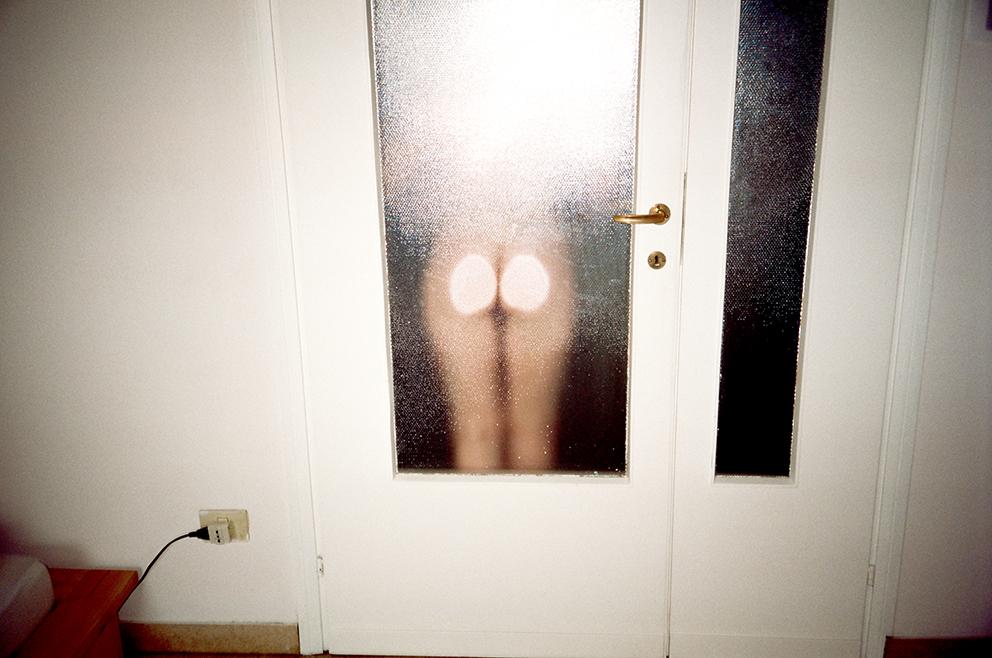
ELISABETTA P. — This is an approach which is typical of street photography, right?
MARCO P. — Yes, the approach is always a bit on the reportage side, although everything is much more refined. By now, this super-street/super-trash style has become a refined kind of trash, merging elements such as reportage and souvenir photography. As I said in the beginning, when I was a child I used to take pictures as a souvenir, and I think this is still living in me; it often emerges in my fashion shots, too.
ELISABETTA P. — In the end, I believe that this will to tell a story conveys an added value to photography…
MARCO P. — It may have an added value for those who give a value to it. Those who have a certain sensitivity are more inclined to understand the power of a certain type of image, those who, instead, approach photography only on a purely aesthetic level may not even grasp that value. On the contrary, they might even consider it ugly, because maybe all they want to see is a beautiful woman wearing a beautiful dress, nothing else. But that is also the norm in fashion and it has to be that way.
ELISABETTA P. — Which are the subjects you love to photograph the most outside of the fashion context?
MARCO P. — Lately I have been working in two different fields of research: paradoxically enough, I am photographing myself, my family and prostitutes.
I have just completed a project on prostitutes… in fact I’d rather say with prostitutes.
Some time ago, my solo exhibition on family was showcased in collaboration with Vice Magazine – a very ironical kind of storytelling, as well as very… naked! I love to work on nudes, and I range from photographing my own relatives naked, up to naked prostitutes – two worlds apart but that fascinate me in equal measure.
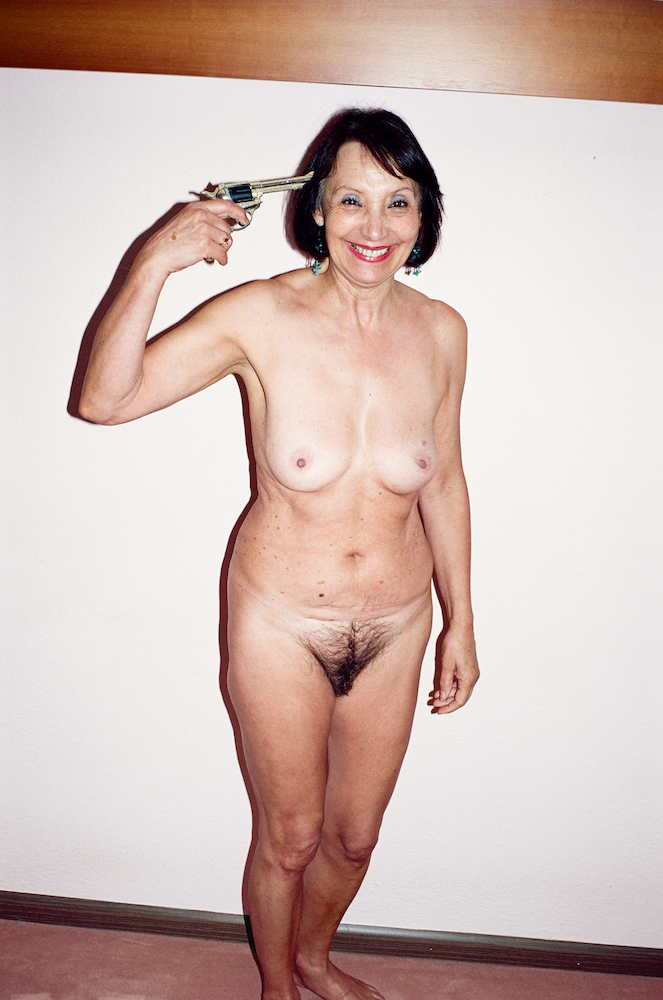
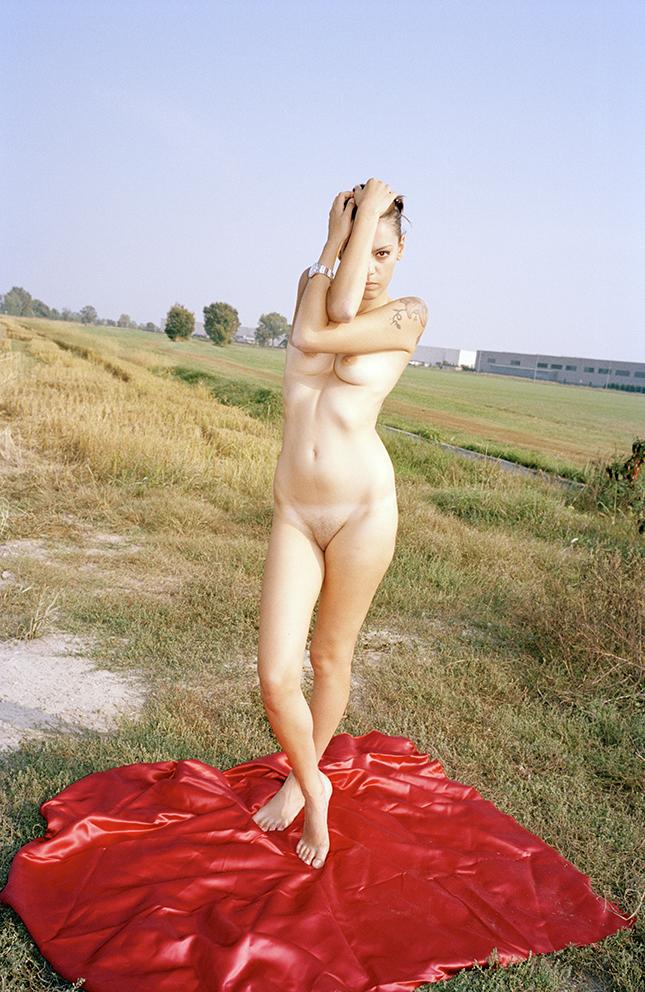
ELISABETTA P. — One of the most interesting aspects of your project with prostitutes is that you enacted the role of an actual client, right?
MARCO P. — Yes, perhaps it would have been even more interesting to film myself in the act of taking those photos; me gazing at my own approach from an outside perspective. Even in this, as I said earlier, there’s always a story, an anecdote to tell.
ELISABETTA P. — Tell us about your experience. Did it amuse you? Has it been touching, disturbing?
MARCO P. — Yes, it has been undoubtedly a touching experience. In the end, you plunge into a world which is still a bit of a taboo, as well as being a bit dangerous. You go there with your camera, never knowing what’s going to happen, photographing things you shouldn’t really be photographing.
It was all very much charged with adrenaline. And I liked that, but at the same time, it also felt a little ‘dirty’… I was constantly torn by self-doubt, wondering whether I was doing the right thing. There was a very powerful mix of emotions involved, as powerful as when I shoot my own family naked. Maybe that’s the connection linking these two projects: they are about strong emotions being aroused in your inner self, however, it is all also very amusing! When I take pictures, I need to feel some excitement: either to laugh or to cry. For the time being I’m laughing, I haven’t started to cry yet!
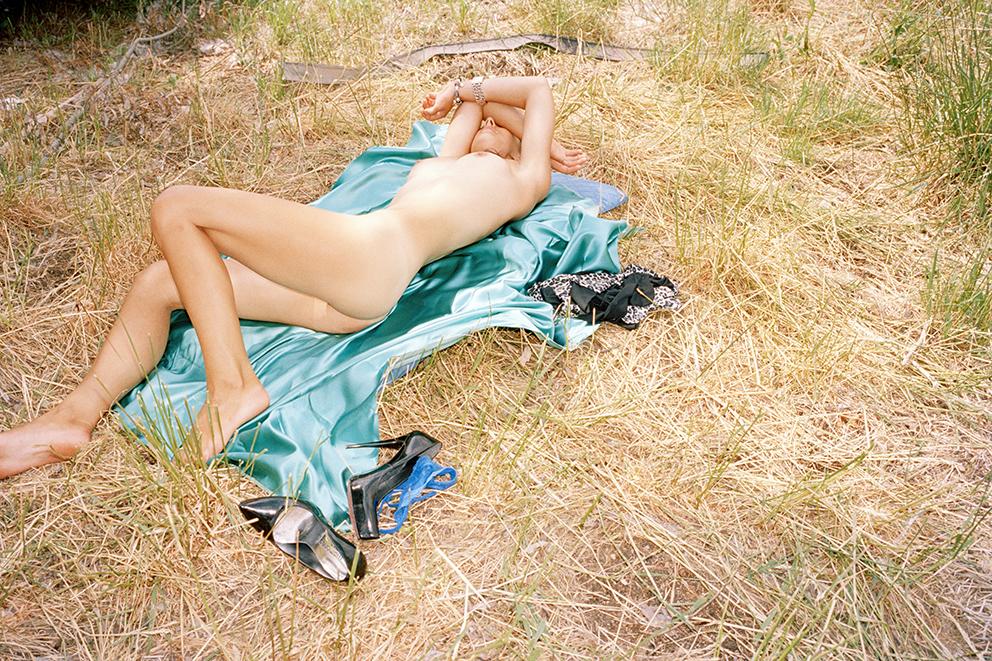
ELISABETTA P. — Nudity is indeed a feature recurring very often in your work, although it appears to have an ironical connotation rather than being overtly erotic. How do you see a naked person, what fascinates you about it, what value do you attribute to them?
MARCO P. — We shall question Freud about that perhaps… I don’t really know myself. Nudity always has some erotic meaning after all, although there is a less ‘typical’ kind of eroticism emerging from my photos, to the point that sometimes they can’t even be called erotic.
I like the fact of stripping people from a mask, to bare them. The word itself suggests it, because fashion and the clothes we wear are a key we give others to understand who we are or who we would like to be. And then, I don’t know… without clothes on… we just look so much better!
To convince people to get naked is not an easy task at all, though. I often find myself in uncomfortable situations. Prostitutes themselves weren’t at all easy to photograph naked. This is because they are women, with their insecurities, their problems. In fact, almost all prostitutes I have managed to photograph were really pretty, but that was not because I chose them, but rather because the less pretty ones would say no. They are women, they don’t feel beautiful and have issues with themselves and with their bodies and hence they refuse to be portrayed.
ELISABETTA P. — What about your family, have they all happily agreed to be photographed naked?
MARCO P. — Yes, they have, actually. Clearly, they feel beautiful [laughs]! Apart from myself – I didn’t come out really good.
In the first piece of research I exhibited, I portrayed my children – they’re young, they never say no; then my mother, my sister and my girlfriend.
Now I’ve started a new little project – little photography-wise, but big for the meaning it has to me. In this one too, there are my mother and my sister who posed naked for me. They are very strong images; today I’ve seen the pictures for the first time and I must admit that they had a really strong impact on me. I’m working on very powerful memories and topics, such as my father’s death, and on very important aspects of my own self, and to see those pictures really touched me, I must say.
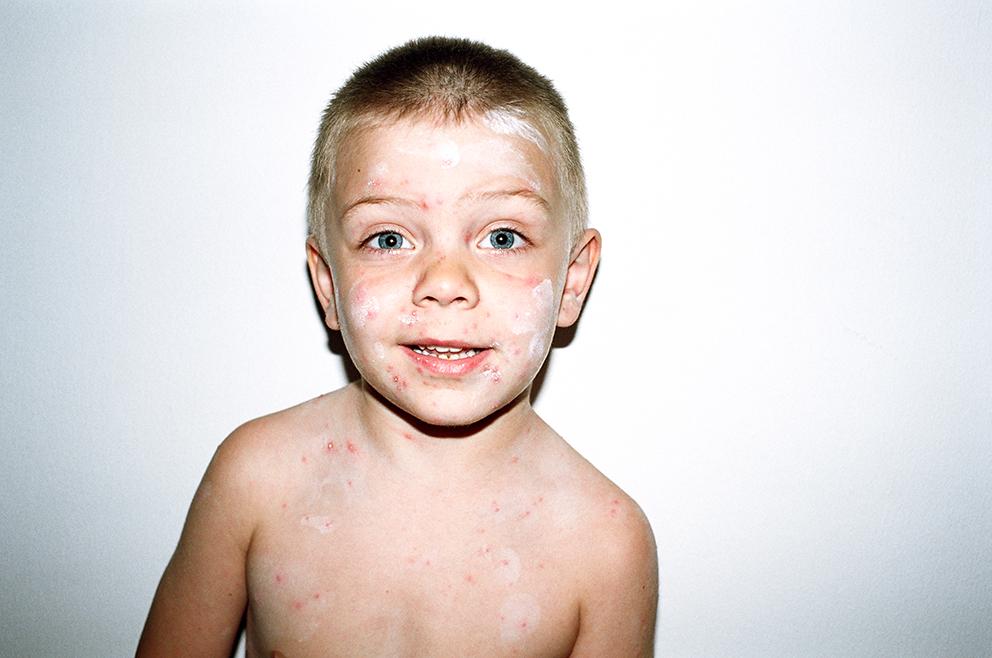
ELISABETTA P. — Satisfied?
MARCO P. — Yes, very much so. They really moved me.
ELISABETTA P. — I can imagine. It is very brave to expose yourself in such an utterly autobiographical field.
MARCO P. — I believe it’s about honesty. In this case, I’ve also analysed myself before going onto touching certain topics, and I came to the conclusion that the first thing when doing art photography – something that claims to be expressive, creative, or give it the name you want – is to be honest with oneself. Only then can one be able to stand for it. Therefore, before going on and photographing other naked people, why not starting from yourself or your own relatives? Why going far away when you have what you need right before you? You don’t necessarily have to go far: if you have something to say, you can say it from where you are. It’s something personal, something only you have. It’s your life.
ELISABETTA P. — Which camera do you use?
MARCO P. — To shoot digital I use Fuji and to shoot film I use Contax. Normally, for fashion, I most likely shoot digital; it’s more convenient, quicker, you can see things directly on set and discuss them with collaborators, it makes work easier. For personal projects, instead, I still use film photography.
It took me a while, however, to start shooting digital, even for commercial assignments: until 2009, when everyone was using digital cameras, I was still shooting film. I think I started in 2010, quite recently. I tried different cameras, but I’ve never managed to find the digital camera that could faithfully replace film. I’ve always tried to make up some expedients in order to get closer to the result I wanted and to that peculiar way of working, also to obtain the lighting I was after.
Aside from film’s performance, it’s the approach and the object that are important. I like to work with an object that first of all I am fond of. I need to be proud to hold it and, most of all, it has to work the way I want.
But we could be talking all evening about the differences between film and digital. Nowadays, digital photography offers a very good performance, you can do what you want with it. It’s a matter of taste, really: film tends to have a very romantic feeling to it, and someone likes to give it a special value, but I believe that a beautiful photo can be taken with both.
For example, I attribute a very high value to my own research and to the people I portray as a part of it, and part of this value lies also in the specific process and method that film photography requires: which is to shoot, print, give the prints to the magazine and then publish them, without much retouching, without any digital processing, otherwise the whole thing would be nonsense – the purity of photography as artistic expression would be contaminated. This recent project with prostitutes, for instance, has been shot on film, printed and then hung on the wall, without any further processing.
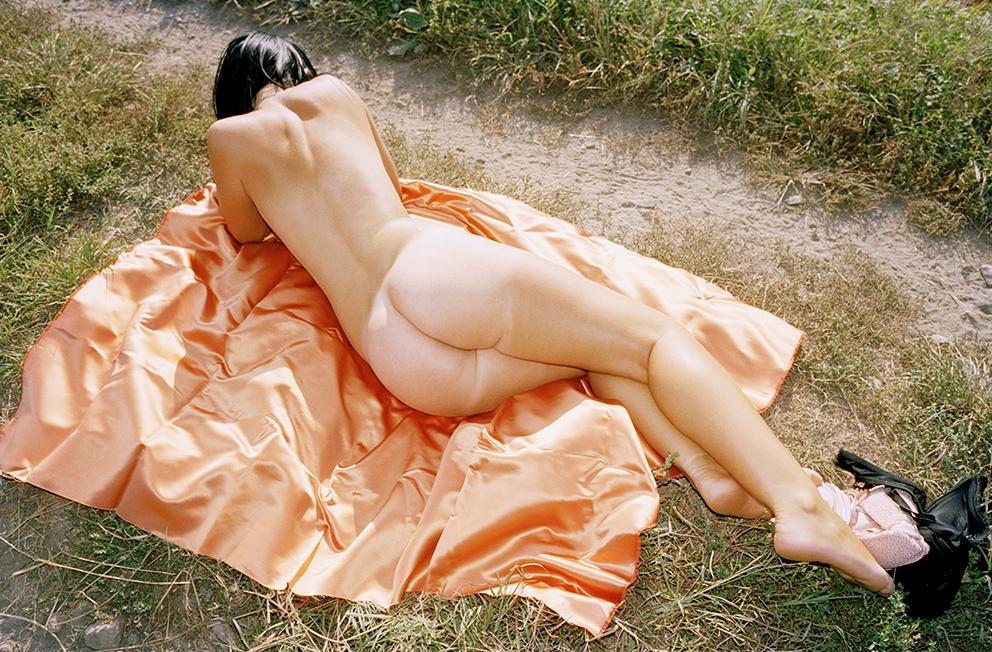
ELISABETTA P. — Right, we are coming to an end, is there anything you’d like to add or to announce?
MARCO P. — Yes, I’d like to stress something, also in the light of the stylistic argument we raised with regard to the similarity between myself and Juergen Teller: I’d like to stress the fact that I have been the one who has brought this language into Italian fashion and who was also able to stand for it and to pursue it. Back then, it was just myself and two other photographers in Italy who supported this expressive language. Now one is mainly devoted to art, the other one works in Paris, while I decided to stay here in the end.
ELISABETTA P. — You stayed strong…
MARCO P. — It has been a little bit of a challenge, dictated also by the course of life: perhaps I would have liked to go abroad as well, but in the end I decided to give Italy a chance – I said to myself: ‘Let’s try to do something in Italy too. If we all leave what are we going to be left with?’. I feel that there is potential, but unfortunately there is also fear and reticence to change.
ELISABETTA P. — Definitely. In our own, small way, with Up-and-Coming Style we are trying to do what you have managed to achieve: we aim to bring something new to our country, where almost nothing similar exists, and where independent publishing struggles to emerge and get established.
MARCO P. — If in Italy we are the first ones to think that nothing is ever going to happen, you can rest assured that nothing at all is going to happen. We have to believe in it, be passionate. I don’t even know myself what it takes, I don’t have a recipe for it. I have a lot to do myself and I still have many dreams to achieve. In the end, what is truly important, is to have something to say, then you can say it from wherever you are in the world.
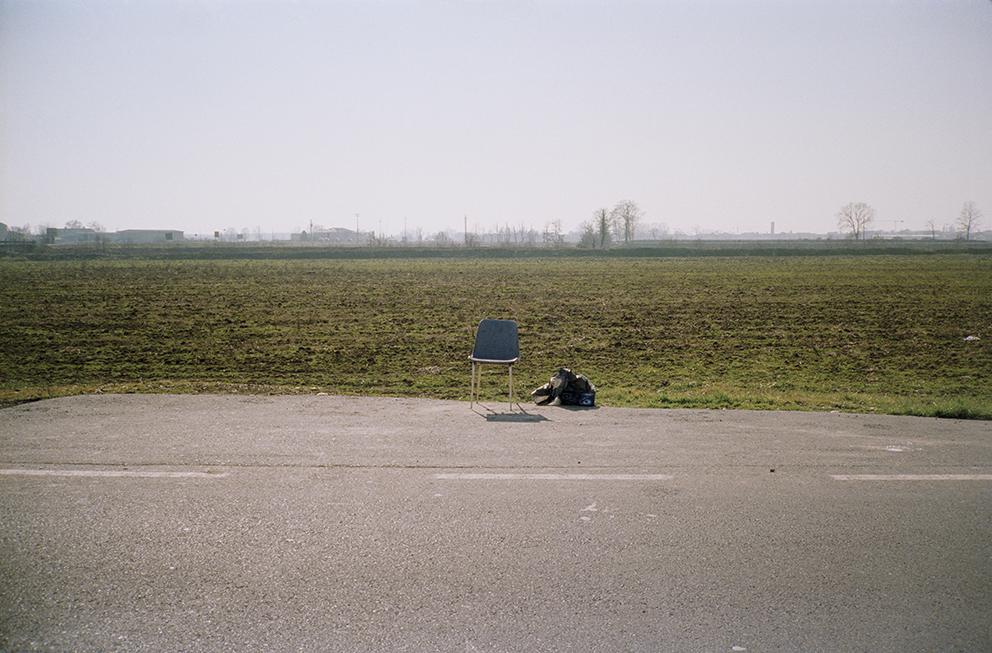
ELISABETTA P. — Definitely, style or language matter to a certain extent if you don’t have anything to say – everything becomes a sort of empty mannerism…
MARCO P. — Exactly, that is what I was trying to say since the beginning, but I didn’t want to sound offensive. Let’s face it, doing fashion photography in this specific manner is trending these days: now people take a flash and a camera, perhaps even that type of camera, they take a model, make her act silly, take a couple of pictures of her and that’s it. Well, it doesn’t really work that way – that is only the first layer of this language, underneath that there is another component which is given by feeling what you photograph.
marcopietracupa.com
instagram.com/marcopietracupa
October 2013